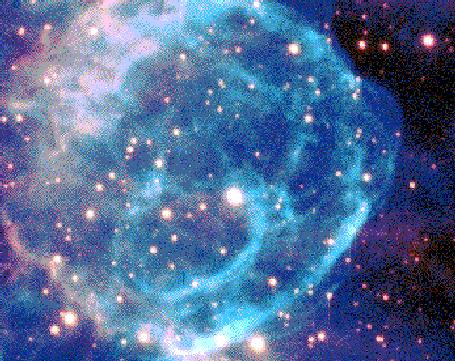
|
Explanation: Wolf-Rayet stars can blow bubbles. These unusual stars are much hotter and more luminous than our Sun. All extremely massive stars will eventually evolve though a Wolf-Rayet phase. Approximately 200 Wolf-Rayet stars are known in our Milky Way Galaxy. Wolf-Rayet stars generate bubbles because they continually eject their outer atmosphere as a stellar wind. This outgoing wind of particles typically carries away more than the mass of our Earth each year! The wind is caused by atmospheric particles absorbing outgoing starlight, although many details of this process are unknown. The Wolf-Rayet is the brightest star in the above picture and is in the center of the large bubble in the nebula known as NGC 2359.
|
January February March April May June July August September October November December |
| ||||||||||||||||||||||||||||||||||||||||||||||||
NASA Web Site Statements, Warnings, and Disclaimers
NASA Official: Jay Norris. Specific rights apply.
A service of: LHEA at NASA / GSFC
& Michigan Tech. U.
Based on Astronomy Picture
Of the Day
Publications with keywords: Wolf-Rayet star
Publications with words: Wolf-Rayet star
See also:
- APOD: 2025 November 24 Á Apep: Unusual Dust Shells from Webb
- APOD: 2025 March 17 Á Thors Helmet
- APOD: 2025 February 3 Á Wolf Rayet Star 124: Stellar Wind Machine
- APOD: 2025 January 29 Á Dust Shells around WR 140 from Webb
- Sharpless 308: The Dolphin Head Nebula
- APOD: 2024 January 9 Á Thors Helmet
- APOD: 2023 March 29 Á Sh2-308: A Dolphin Shaped Star Bubble
